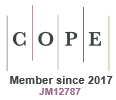CH25034Preparation of dibenzimidazolium fluorescence probe based on binaphthol and the detection of Al3+
A dibenzimidazolium salt based on binaphthol (1) was synthesised. The recognition of compound 1 for Al3+ was studied by fluorescence spectra, ultraviolet spectra, 1H NMR, HRMS and IR spectra. The high K value for 1·Al3+ indicated that 1 had strong binding force for Al3+. The low detection limit indicated that 1 was sensitive to the detection of Al3+. Compound 1 as a fluorescence probe can effectively distinguish Al3+ from other cations. (Image credit: Qingxiang Liu.)




















